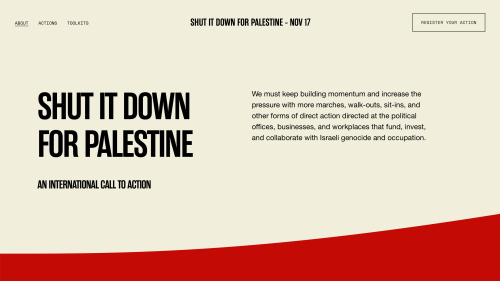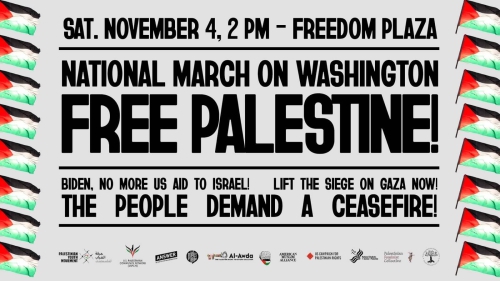After the Floyd Murder: Are We Ready to Change?

The murder of George Floyd at the hands of a policeman unleashed a wave of protest across the United States. He wasn't the first unarmed Black man or woman to be murdered by an officer using unwarranted deadly force (there are about 100 per year). Nor is it the first time that we've seen mass protests across the US in response to racial injustice. I've witnessed such events repeatedly in my lifetime, but this time it feels different.
America has been defined by racial injustice from its very beginnings. We were born with the original sin of slavery and fought a bloody civil war to end this evil institution. In its aftermath, little was done to compensate the millions of freed black citizens. And within a few short decades they fell victim to a new and brutal system of racial prejudice and imposed discrimination that denied Black Americans equal rights and economic opportunity – locking many in poverty that has lasted generations. At the heart of this system was organized violence that worked to maintain inequality and the subjugation of an entire race. A few examples: during a 30 year period, just a century ago, over 4,000 Black Americans were lynched in acts of vigilante terrorism; and less than a century ago, in my city of Washington DC, two entire neighborhoods of hundreds of black families were forcibly evicted from their homes in acts of ethnic cleansing to make way for two all-white schools. All of this is our history and must be acknowledged because it lays the predicate for our present-day struggles.
I came of age during the civil rights movement. I marched for open housing in the 1960's and worked with an anti-racism organization protesting racial injustice in Philadelphia in the late 60's and early 70's. And I witnessed the urban unrest that devastated major cities in 1968 in the aftermath of the assassination of Martin Luther King Jr.
When I founded the Palestine Human Rights Campaign (PHRC) in the 1970s, I was privileged to get to know most of those great African American leaders who had been Dr. King's colleagues. Those I didn't meet through the PHRC, I was able to work with during my involvement in Rev. Jesse Jackson's 1984 and 1988 presidential campaigns.
I was honored to have been invited with many of these same leaders to a small meeting in the White House with President Clinton to discuss his planned "One America" initiative, national dialogue on race. The concept was a good one, but after a few outings, interest petered out and the project died.
During the ups and downs of these decades, there were moments when we felt that progress was made. Legislation was passed guaranteeing civil rights, voting rights, measures to end segregation in schools and housing, and affirmative action. We even elected our first African American president, causing some to naively assume that we had, as a society, finally transcended our racial divide.
But after each step forward, the reality of racism came roaring back smacking us hard. There were reminders at every turn – from a Republican Congress determined to roll back efforts to address racial inequity, to more wanton killings of black people in our communities with no consequences and the resultant racial unrest.
The simple fact of life in America is that despite some real progress made since the time when Dr. King lamented that two Americas – one black and one white – that very real division still defines our present-day reality. Most American cities are still deeply racially divided. Inequities remain in income, employment, housing, health, education, criminal justice, and opportunity. The statistics in each of these categories are staggering and should be disturbing to all Americans. The bottom line is that if you are born into a white upper-middle class family, the odds are that you will go to a better school, receive a better education, get a better job and live a longer life than a child born into a black family. Just one example of the byproduct of this sustained inequity: as a result of this denial of opportunity and other deformities created by racial inequality, while African American males comprise 6.5% of the overall population, they are 40.5% of the prison population.
I'm writing this almost two weeks after the killing of George Floyd by a white police officer. As I said at the beginning of this article, his death comes on the heels of dozens of other recent shocking murders of black men and women at the hands of law enforcement officers, like Eric Garner, Michael Brown, or Breonna Taylor, or random white men who saw a black man in their neighborhood, like Trayvon Martin or Ahmaud Arbery. Each time, there was outrage. There were protests and demands for justice. When officers were involved, police departments responded defensively to protect "their own." And when there were demonstrations, all too often police responded with such shocking displays of military hardware that some American cities looked like foreign battlegrounds.
There are some additional problems that must be noted. Because police departments have repeatedly shielded their officers from accountability, they have developed a sense of impunity. In addition, a culture of aggression has taken hold, in which officers are trained to adopt a hostile manner, to shoot first and ask questions later. A recent study of police violence in Minneapolis (the city where Floyd was murdered) showed that police have used violence against citizens 11,500 times since 2015 – with a black person five times more likely to be the victim than a white person. As a result, in too many instances, many black citizens do not see police as their protectors, but as their persecutors.
Coupled with this is the growing militarization of local police departments. They have been supplied with military hardware and vehicles. Many police departments have gone to Israel to learn techniques from the Israelis, which only contributes to the sense that they see themselves and are increasingly seen by the public they are serving as an "occupying army" in a battle zone – using tear gas and rubber bullets.
We've seen this before, but not as we see it today playing out on such a massive scale.
The difference today is not just that the protests continue after so many days and nights of unrest, but that they have come to involve millions of Americans, black and white, rich and poor. Something has changed – and for the better.
After witnessing the horrible murder of George Floyd, and feeling isolated by the COVID-19 lockdown, Americans crave release and desire to be a part of something larger than themselves. It is also, without a doubt, a reaction to the behavior of President Trump, who exploits the unrest to inflame his base. Using now familiar tactics, he proclaims himself the law and order candidate, decries lawlessness, and casts even peaceful protesters as "terrorists."
In one shocking display, Trump ordered federal troops to forcibly remove peaceful protesters using tear gas and rubber bullets from in front of the White House. Then, heavily guarded by troops and police, he strode across Lafayette Park to St. John's Church for a photo opportunity, holding up a bible. The entire affair was so disturbing that it was denounced not only by mainstream religious leaders, but by many of his evangelical religious supporters. Antics like his decision to use the military against Americans, and his tweets of incitement are, without a doubt, contributing to the continuing protests.
Finally, as we enter the third decade of the 21st century, it is important to recognize that while structural racism persists, there is a change in the American people. Young people, black, brown, and white, have a very different view of the world and each other. These are kids who grew up inspired by President Barack Obama and traumatized by mass killings. They are not only tolerant of racial diversity, they celebrate it. They not only find inequality and injustice unacceptable, they feel empowered to act against it.
Some commentators try to find similarities between the protests of the 1960's and those of the present day, but one difference stands out. It is true that, back then, there were civil rights and anti-war demonstrations. But with few exceptions, the crossover, especially among white youth, was limited. There were some courageous white students and white-led left organizations that played a role in the struggle to end segregation. But on campuses across the country, white students were more focused on Vietnam and various counter-cultural movements.
Today is different. The anti-racism protests against police violence and racial inequality have brought together black and white, rich and poor. They are calling for real, fundamental change and it is a hopeful sign that we may be ready, as a society, to address the legacy of our original sin and bury it, once and for all. It will not be easy to change both deeply entrenched racial inequities and endemic police violence. But my hope is that we are on the road moving forward.
Topics: Police Brutality, Racism, Street Protest (Rally) Values: Equality, Fairness, Justice, Tolerance
Views: 1178
Related Suggestions

















